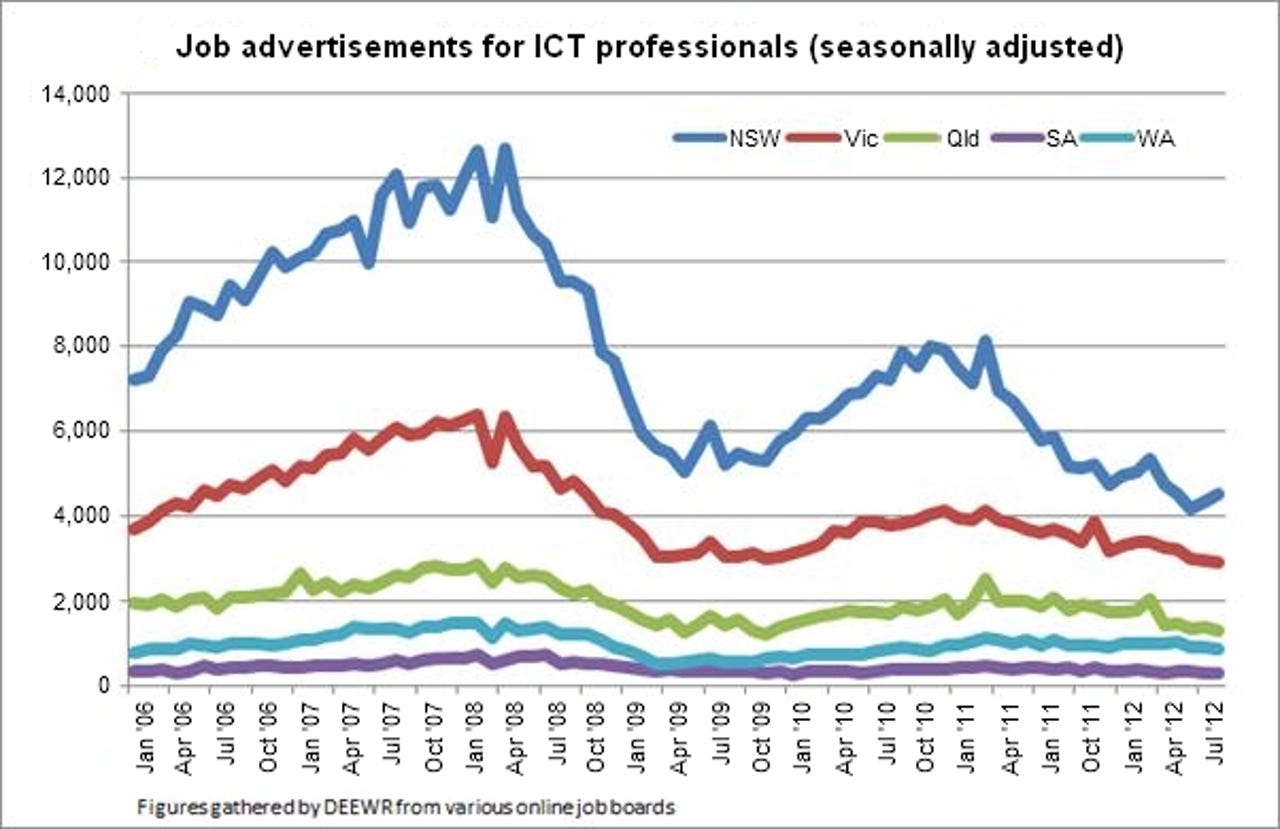Jobwatch: Why you should work for yourself

Last month provided a glimmer of hope for ICT professionals who are out looking for work.
The number of jobs advertised, seasonally adjusted, rose 2 percent from July to August, and 4 percent in New South Wales, according to data gathered by the Department of Education, Employment and Workplace Relations (DEEWR) on the number of online job advertisements in Australia.
Sadly, a couple of months in positive territory don't signify a trend. The broader picture shows a cyclical pattern that still has a downward trajectory. It's also clear that the concentration on NSW is diminishing. In January 2006, 49 percent of ICT jobs advertised were in NSW; now it's 41 percent.

These figures are as confusing as they are alarming. For a start, it's not the result of any structural shift away from ICT. Advertisements for ICT professionals accounted for 6 percent of all positions advertised last month; pretty much where we were back in January 2006. This downward trend is occurring across all sectors.
Despite the drop in job advertisements, there are still jobs out there. Australia's unemployment rate is back where it was in January 2006 — 5.1 percent. There far fewer jobs advertised, but the same number of people employed. Go figure.
To explain this phenomenon, the answer could lie in how jobs are being advertised.
The DEEWR figures are based on vacancies on four sites: Australian Job Search, Seek, My Career, and Career One. A recent Hays report (PDF) highlighted how technology is changing the way in which recruiters and job seekers find one another. Of the candidates they surveyed, 70 percent used LinkedIn when looking for jobs, either to find vacancies or to research companies that they'd like to work for. This indicates that social networking could be having a significant impact on how recruitment takes place, sidestepping conventional channels.
The second factor at play is almost certainly the rise of independent contractors and people running their own businesses. Figures from the Australian Bureau of Statistics (PDF) show that the number of independent contractors and business operators rose from 2.03 million in November 2008 to 2.16 million in November 2010. If that trend has continued, we should expect it to be close to 2.4 million people now. That's a significant chunk of the workforce, particularly amongst those in their 40s and beyond.
These two factors show that job seekers need to reappraise their approach to finding work. Flicking through job ads is clearly shifting out of fashion. Instead, you might find other opportunities by using your networks to find roles that are never advertised. Increasingly, though, the opportunity rests with those who work for themselves. The notion of companies downsizing and contracting out is not a distant idea; it's clearly part of a massive shift that's happening right now.